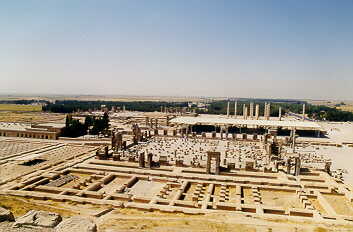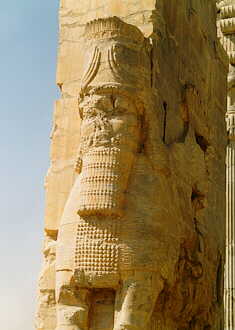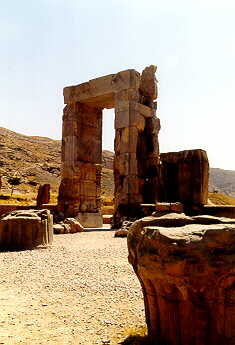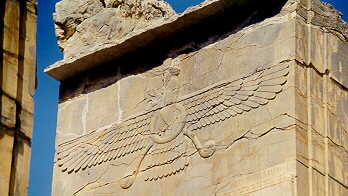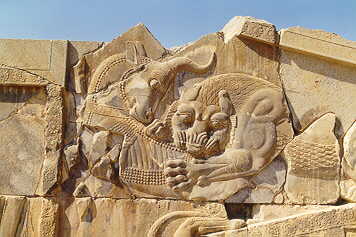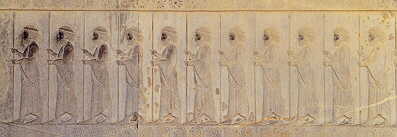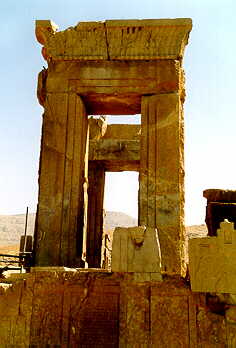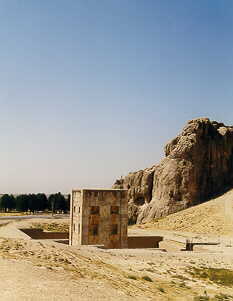|
Persepolis or Takht-é Jamshid as the Iranians call it, was built in about 500 BC by the Achaemenian Kings Darius, Xerxes and their successors. There are no words to describe Persepolis. On the other hand, if this page wouldn't have any text, it would appear quite strange, so at least we'll tell about some of the things we saw here.The site of Persepolis is very large, over 125.000 m2. Besides that, there are hundreds of interesting details. That means you can easily spend a whole day here and still be able to discover things you haven't seen before.
|
The Gate of All Nations, also known as the Gate of Xerxes, is one of the first things you see. This gate bears inscriptions in three languages that you should be kind to travellers and must respect other peoples' cultures. |
|
The original Persepolis stood on a platform about 10 meters higher than the surrounding plains. You can get the idea what it looked liked when you walk to Persepolis from the car park and have to climb those magnificent stairs before you can see a thing. After entering the platform, you see there is another platform that is a bit higher. This second platform holds the Apadana Palace. This is the place where the King held his receptions.
In 331 BC, Persepolis was destroyed by Alexander the not-so-Great |
|
| It isn't hard to discover the symbols of the Zoroastrian religion. Above you see the symbol for the Great God Ahura Mazda. You see him in a lot of places. Other symbols you see very frequently are the symbols for the four holy elements: lion = fire, bull = earth, lotus flower = water and eagle = air. A lion attacking a bull is the symbol for Now Ruz, the Iranian New Year, which is celebrated on the 21th of March. | |
|
|
|
The best kept reliefs can be seen along the staircases of the Apadana Palace. There are 23 different scenes showing us the representatives of 23 different countries in the Achaemenian Empire, how they dressed, what weapons they carried and what treasury they brought from their homelands to please the King.
|
|
| Located about 6 kilometers north from Persepolis is Naghsh-é Rosham, the tombs of Darius, Xerxes I and II and Artaxerxes. Being Zoroastrians, the bodies of the dead Kings were fed to vultures. When the vultures were finished, the remaining bones were buried in the ground. Simple and easy.
When the Achaemenians travelled to Egypt, they saw the pyramids of the Pharaohs and were very impressed. When they were back home, they dig up the bones and started to make something impressive for their own kings. Probably they have also been in Petra in Jordan???
|
|
| A riddle to all the archaeologists is this cube opposite the tombs of the Kings. Some say it is an ancient fire temple, but they can't say for sure. |
نظرات شما عزیزان:
 آمار
وب سایت:
آمار
وب سایت:

